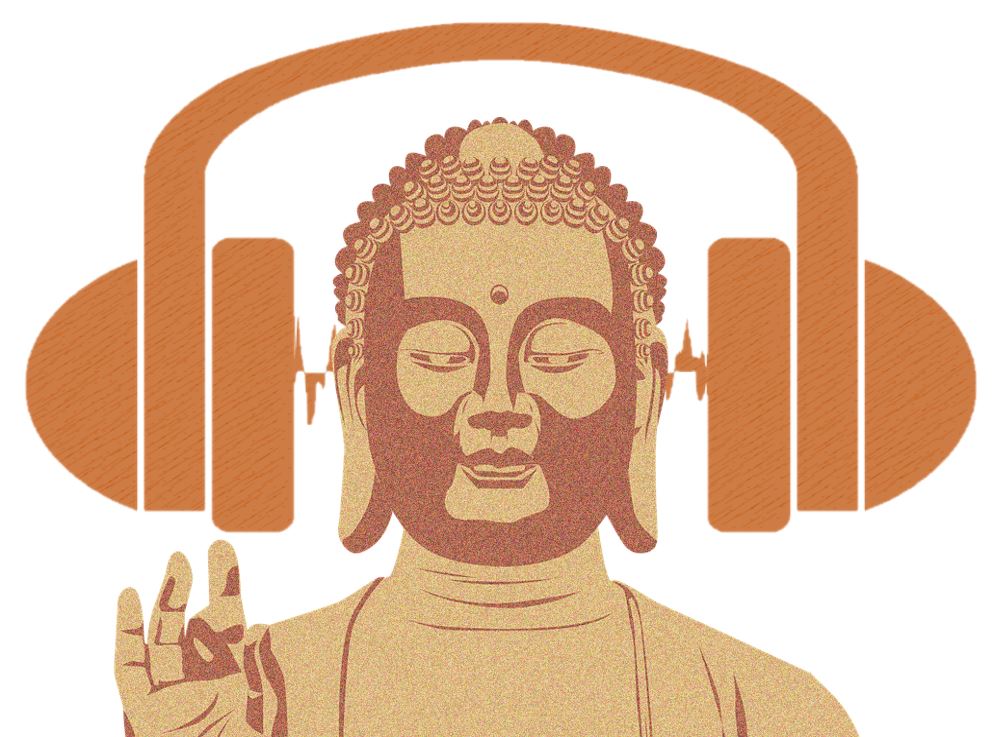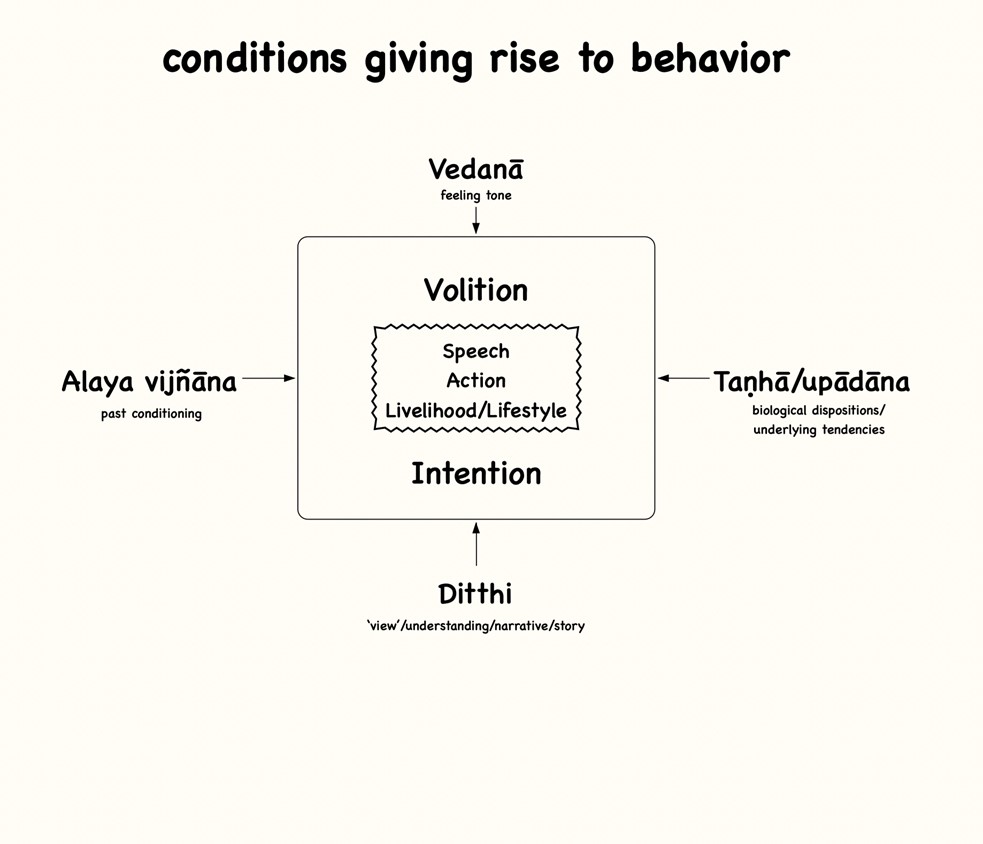The vast majority of us, if we are at all concerned about our planet, are suffering from “climate anxiety”, a new mental phenomena that is now recognized by psychotherapists. We have good reason for having anxiety, especially those of us living in California. Fires, drought and daily reminders of our tenuous environmental situation causes two different responses: to completely ignore the situation or succumb to nihilism. Neither of these responses is helpful for the earth or the individual. Our Buddhist practice sheds much needed light on how we move forward in these challenging times.
Tony Bernhard displayed this chart during his presentation.
Reconsidering Sitting Meditation: An Experiment & Exploration

Sitting Insight Meditation is one essential element of a purposeful and intentional life. It is, at its core, about laying the foundation for a rich, full, satisfying life. It points our mind, heart and body towards a conscious and awake relationship with ourselves, with others and the world around us.
Several preconditions must be in place in order for sitting meditation to play these defining and guiding roles. Specifically, we need to develop a combined conceptual and experience model of what we are doing in meditation, how we are doing it and why we are doing it. If this is not present, our sitting meditation will be unfocused and misdirected. More importantly, it will not direct, support and sustain us on the path to a more satisfying life or a practice with the potential of being release from the constant and punishing management and control of the self or ego.
This evening will involve a reconsideration of several fundamental elements of Sitting Insight Meditation. It will include an experiment during the 700 pm hour.
You will need to have a straight back chair available to use during the meditation.
– the kind that would normally be part of a kitchen or dining room set. We will use the sitting experiment during the first hour as part of our exploration of sitting fundamentals during the 800 pm hour.
The subject matter of this evening is appropriate for all stages of practice.

Audio recordings for this retreat are not available to the public however the retreat registrar has provided the attendees with a link and password to access the dharma talks that were recorded. If you’re interested in attending our next annual retreat, visit the retreat overview page, click here.

On the eve of SIM’s second online annual retreat, let us consider retreat practice in general and online retreat practice in particular. What is unique about online retreat? Are there distinct advantages to in-person retreats? What can we do to make the most of an online retreat? Please be prepared to share your retreat experience – online or in person – in the era of pandemic isolation.

Is Movement “Meditation”? An Exploration

You hear people say “running is my meditation.” Or maybe yoga, biking, Tai Chi, Qi Gong, kayaking, archery, dancing, golf, swimming or gardening. Or how about aerobic exercise and weight lifting?
Are people who talk this way talking about the same thing? Or different things? Can we be in movement, even vigorous movement, and simultaneously be in “meditation”?
During this evening we’ll explore whether movement, in its many different forms, is “meditation.” If the answer is “Yes,” what allows movement, or a particular activity, to become meditation? If the answer is “No,” why not? And a pivotal question: can movement be meditation when done by one person, but not when done by another person? What if the person is a world class Olympic athlete?
This will be a practical dive into a rich and wonderful field of exploration. There is a wealth of commonalities, and valuable practice and life lessons, that emerge from an investigation of the relationship between movement and meditation.

An Auspicious Day
Zoom Chat
Bhaddekaratta Sutta (MN 131)

Visit Us
SIM meets online and in-person at the Sacramento Dharma Center
What is Dana?
Dana is a Buddhist word that means generosity or heart. Nearly all Sacramento Insight Meditation activities are offered on a dana (donations) basis. This means our programs are sustained by the generosity of instructors in offering teachings freely and on the generosity of students and members of the meditative community in the form of financial support, service and participation in events. Practice dana, please support our Sangha. DONATE NOW

